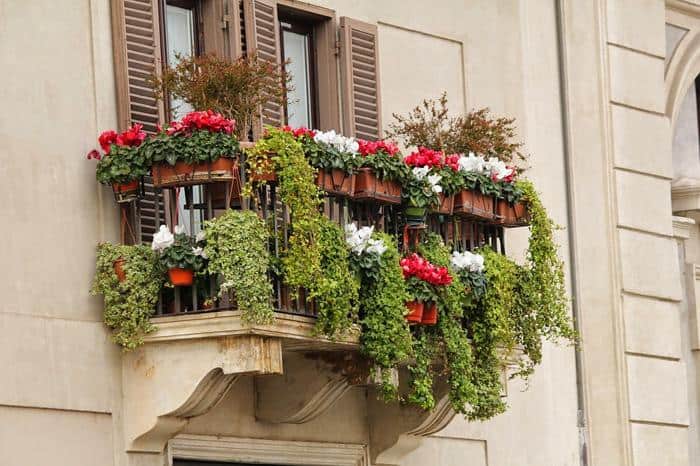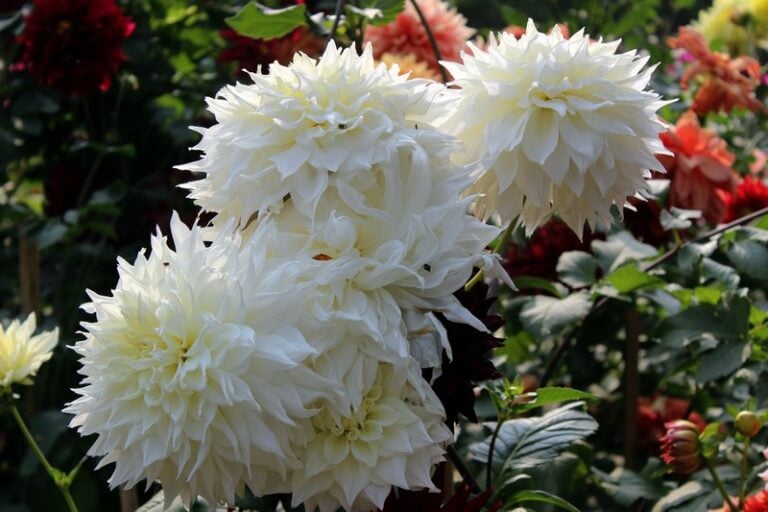What Are Our Picks for the Best Ground Cover Plants?
Our recommendations for the best ground cover plants are Japanese Spurge and Vinca Minor Evergreen Ground Cover. Grass, of course, is the quintessential ground cover. But we wanted to focus on ornamental varieties that can add color and class to a landscape design. We narrowed our list to those grow fast. If you want better ground cover, our list of recommendations has you covered.
Our Top Picks for the Best Ground Cover Plants
[wptb id="8039" not found ]Why You Should Consider Ground Cover Plants
Ground cover plants can serve many purposes and solve common garden problems. Their versatility is what makes them shine. Grass is a familiar ground cover. It covers bare spots in your yard and prevents erosion. Ornamental ground covers can do the same thing in a more decorative way. They’re an excellent choice for areas in which grass won’t work.
A ground cover is a good option for planting around the base of trees. Without grass to mow, there’s less of a risk of damaging trunks. They can also grow in shady ground areas like these places where grass may fail to thrive. And you can match a ground cover with the needs of a site. Many smaller varieties exist that can solve landscape issues without taking over the yard.
Many of their other advantages are aesthetic. They can act as the unifying element in your landscaping that brings everything together. Ground covers with plants of various heights can create interest and drama in your landscape. They can add color and complement a mood. You can also use them to soften the hard lines of driveways and sidewalks.
Things You Need to Know about Choosing Ground Cover Plants
The basic principles of choosing garden plants apply to ground covers as well. You should match the location’s conditions with the needs of the plants. If you’re planting them under a tree, you should consider this micro-climate. It likely has more shade than the rest of the yard. The soil conditions may differ under a tree versus the rest of the yard.
The Right Fit
One thing you need to consider is the relationship between some ground covers and adjacent plants like trees and shrubs. Allelopathy describes these good and bad effects. For example, some oaks may produce toxic substances that can harm other plants like herbs and grasses. Likewise, plants like the black walnut tree and tall fescue might not play nice with other plants.
In these cases, your ground cover plants will likely suffer, so you need to know how other plants may affect them. Common allelopathic plants also include the tree of heaven, juniper, perennial rye, and foxtail. Fortunately, most affect only a few other plants. Your cooperative extension service can help you identify potential problem situations.
This video from the University of Illinois Extension offers an example of how you can use ground cover to create interest in your landscape design.
https://youtu.be/yGBNKZcZVME
Hardiness
With any outdoor plant, you must consider its hardiness. Limit your choices to plants that can tolerate your area’s USDA Plant Hardiness Zone for the best success. A plant’s designation gives you an idea of the lowest extreme temperature that it can handle. If you live in Zone 3, it doesn’t make sense to include plants that can’t tolerate freezing temperatures.
The hardiness zone is only a guide. Your yard likely has different micro climates where areas may be wetter than others. There may also be high spots that are windy and thus, drier. In these cases, you need to match plants with the local conditions and the challenges that they bring. These things can affect how well growing ground cover plants may fare in the long term.
The Right Height
You should also consider the height of ground cover plants. While the term may imply short and compact plants that isn’t always the case. Lamb’s Ear, for example, forms 30-inch wide clumps. It becomes important when planting around tree bases so that air can still circulate at the ground level. That will prevent bacteria and mold growth which can prove deadly to some trees.
Invasive and Aggressive Plants
Many ground cover plants grow quickly which is a great advantage if you want to remedy a bare spot fast. However, there is a balance between covering area quick and getting out of control. Members of the Mint Family such as catnip can easily get out of control and spread far outside of their intended spot. These plants are considered aggressive.
Others may invade other areas in your garden such as flower beds. These are invasive plants. Either situation is unacceptable. At their designated space, they are a welcome addition. Once they encroach on other parts of your garden, they become an unwanted weed. And weeds, instead of fixing a problem, become one.
The Long Haul
You should also consider the long haul when selecting a ground cover plant. Some plants like Lily of the Valley are especially tenacious. Even if you’ve moved on from them a long time ago, you’ll likely see plants popping up for many years to come. This plant also produces toxic berries, something else to consider if you have children or pets in your home.
Companions
Like other garden plants, ground covers will attract other visitors to your garden. While you may welcome butterflies and hummingbirds, honeybees may be a different story, especially for areas close to entrances and windows. It’s a good rule of thumb to vet any plant that you are planting close to your home for these considerations.
Our Recommendations: Japanese Spurge and Vinca Minor Evergreen Ground Cover
Our criteria for choosing the best ground cover plants included several factors. We wanted a plant that would fill in an area with a carpet of foliage, seeing as that is often a reason for choosing one. We also opted for a plant that was low maintenance. And finally, we liked the idea of using ground cover as the element that brings our landscaping together.
The Japanese Spurge is a slow-growing, hardy plant that is tolerant of a variety of soil conditions and sun exposure levels. The plant does well in Zones 5 through 8. We enjoyed its beautiful spring flowers and that fact that it is an evergreen. We also liked the fact that it stays on the smaller size, at less than a foot high. The fact that it is deer resistant sealed the deal.
Vinca Minor Evergreen Ground Cover, also known as creeping periwinkle, produces delicate spring flowers like Japanese spurge. It quickly forms a lush carpet of dark green foliage. We liked the fact that it is an evergreen too, with a flower that may persist into the summer. The fact that it can tolerate a range of sun exposure levels was a perk.
Choosing a ground cover plant offers an excellent opportunity to add color and pop to your landscape design. The fact that these plants can hide problem spots is a big plus in our book. For areas where grass won’t cut it, ground cover plants are a suitable option. Think of them as another element in your landscape design.



